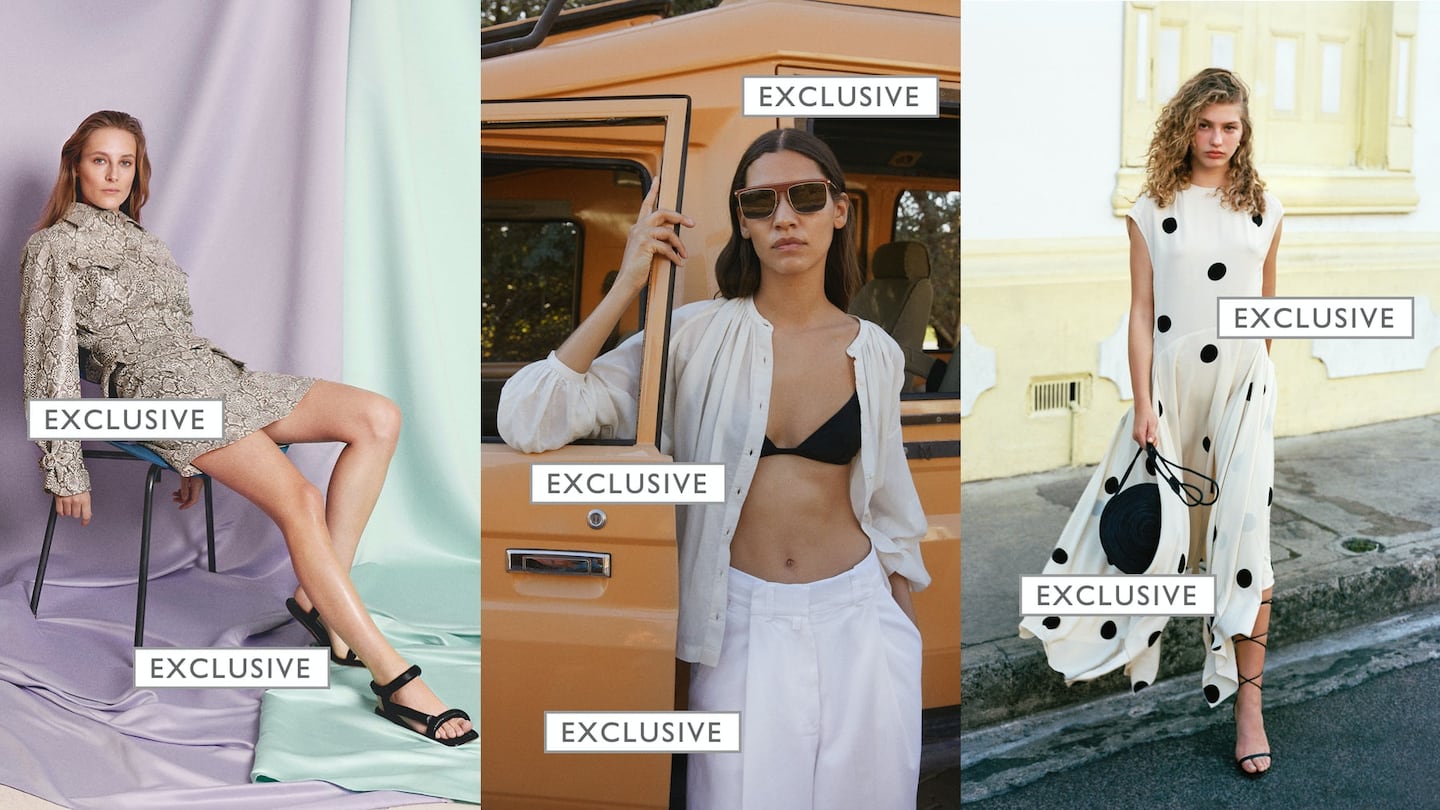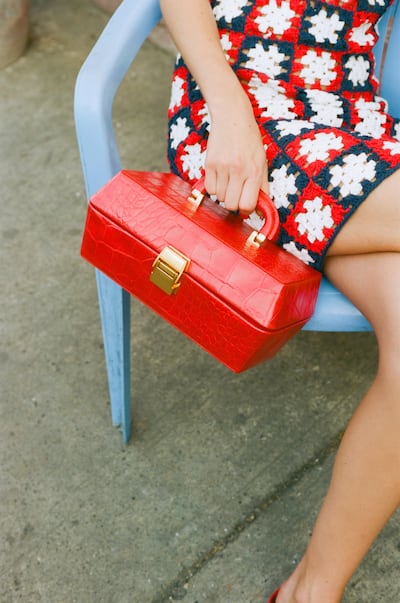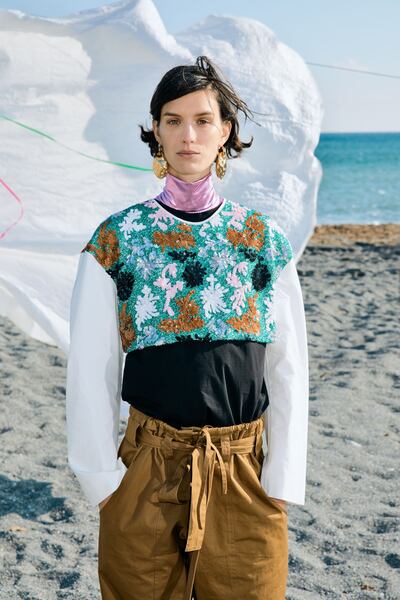
The Business of Fashion
Agenda-setting intelligence, analysis and advice for the global fashion community.

Agenda-setting intelligence, analysis and advice for the global fashion community.

LONDON, United Kingdom — Open any landing page or e-mail from a luxury e-commerce player, and you're likely to find dozens of capsule collections and product drops labelled as "exclusive." Net-a-Porter alone has 145 exclusives planned just for the Autumn/Winter 2019 season, many of them from emerging or smaller labels. Just last week, exclusives from Kassl Editions and Loewe dropped for spring.
Retailers have touted unique merchandise to get customers in the door since the earliest days of department store and catalogues. But the rise of e-commerce — and global marketplaces that stock hundreds of thousands of items in particular — has set off an arms race among online retailers to offer the most exclusive stock.
“A consumer can go online and see product from every boutique in the world on a site like Farfetch,” said Maria Lemos, founder and director of multi-label showroom Rainbowwave. “Online players need an angle of differentiation, so they’re trying to carve out a slightly different identity.”
Online players need an angle of differentiation, so they're trying to carve out a slightly different identity.
For a retailer, exclusives can get the consumer into the habit of visiting a website outside of the usual seasonal cycle — right before a holiday or a special occasion, for instance. They also boost sales and brand engagement if a customer can get limited-edition product from their favourite label, and for many high-performing brands have become imperative.
ADVERTISEMENT
They can range from selling slight variations on a popular design — think Wandler's leather belt bags in new colourways — to making new designs for a retailer, from a spring capsule Ganni designed for MyTheresa to Virgil Abloh's Evian water bottles for MatchesFashion.
“Having newness coming in all year round is very important,” said Natalie Kingham, buying director at MatchesFashion. Exclusives serve two purposes, she said, both to keep up the stream of product during the peaks and troughs in the traditional delivery cycle, but also to service the customer during their most engaged periods — for instance when buying vacationwear in July or party outfits in December.

An exclusive handbag by Staud | Source: Courtesy
Net-a-Porter uses exclusives to fill the gaps when customers want out-of-season products. "That's how 'Jet-a-Porter' came about," said Elizabeth von der Goltz, global buying director. "Pre-fall collections would ship in June and were fall-driven, but customers wanted to buy something then and there for their holidays." Last summer, a record-setting heatwave in the UK sent shoppers looking for summer workwear, at a time when the retailer would normally be stocking winter coats and sweaters, so Net-a-Porter released exclusives by Rejina Pyo, JW Anderson and Nanushka, among others, to drive sales.
For small brands, exclusives are becoming obligatory. They're a way for an emerging brand to test new markets and develop relationships with a large online retailers and their customers. The largest retailers put big dollars into marketing exclusives, creating dedicated content on the homepage, newsletters and social media that a small label could never afford on their own.
“Exclusives have become the norm,” said Staud co-founder and creative director Sarah Staudinger. “I always joke that we design four collections: one for us, one for the retailers, one exclusive for them and one for us.”
When Staud launched in 2015, retailers would ask for one colour or style, but now it’s more common to request a series of capsules that tell the brand’s story, she said.
For Needle & Thread's Pre-Fall 2019 collection, exclusives made up 25 percent of wholesale revenue, said founder and creative director Hannah Coffin.
ADVERTISEMENT
“It’s something you need to get on board with and commit to,” she said.
Often, limited-edition exclusives end up becoming something more.
“We’ve done a lot of reorders for online exclusives because they have performed so well,” said Isaac Ross, founder and chief executive of swimwear brand Solid and Striped.
But some analysts and designers say customers have a limited appetite for exclusives.
“The exclusives thing is getting overused and losing its effectiveness,” said Robert Burke, founder and chief executive at Robert Burke Associates. “It needs to be re-evaluated.”
“With new labels launched every day... it’s going to become saturated for sure,” said Peter Baldaszti, chief executive of Nanushka, a contemporary brand that launched on Net-a-Porter in 2017. Elena Troulakis, commercial director at business accelerator Tomorrow, emphasises that to stand out, they need to be thoughtful. “You can get attention quickly and lose it quickly as well.”
It's something you need to get on board with and commit to.
Capsule collections can be expensive to make and difficult to deliver in the quantities needed. Emerging labels may not have the staff to design additional items on top of their main collections. Manufacturers often charge extra for small production runs, or request a minimum order of fabric that exceeds the amount needed, said footwear designer Emme Parsons.
“It’s challenging,” said Baldaszti. “You really need to build an agile supply chain to manage and successfully deliver capsule collections.”
ADVERTISEMENT
Exclusives can put pressure on cash flow and profits. Typically, the greater the variety of items a brand produces, the lower the margins. At an emerging label, creating 20 units of a shoe in a different colourway for one retailer, as opposed to 300 units for the main collection, is a strain on resources and staff.

Colville exclusive for MatchesFashion | Source: Courtesy
Brands may not feel they have a choice. Charli Cohen, a London-based activewear designer, was stocked at MatchesFashion for three seasons as the brand’s biggest multi-brand account, when they requested exclusives in a statement colourway after seeing good brand sales.
“If you’re working with a big account, there is a pressure to do that to sustain the relationship,” said Cohen. “The exclusive pieces didn’t sell through and they asked us to buy them back in order to generate budget for next season.”
The brand was left with overstock and cash flow problems, and had to upcycle — transform old garments into new ones — to make pieces that would sell. Cohen also changed from a seasonal production to drops, and overhauled the brand’s wholesale strategy and terms to work with retailers that would fit.
Kingham said MatchesFashion discusses surplus stock with every designer, regardless of exclusivity, but is mindful of a brand’s size and any cash flow issues they may be having.
Bigger e-commerce players can show flexibility with smaller labels when it comes to lead times and deliveries.
“There’s an understanding if you’re an emerging brand and have a limited budget they will initially have a bit of leniency,” said Troulakis. “They may reverse the deposit, they might be flexible with deliveries and arrange a window suitable for the designer.”
You need the right calendar and timeline, the right scale and the right partner.
Having worked with various emerging labels, Rainbowwave’s Lemos advises that brands need to be able to have clear conversations with retailers about what is possible.
“If a brand has a minimum order of 200 per style, they need to be transparent with the retailer about it,” she said, adding that the most effective exclusives aren’t just “exclusives for exclusives sake,” but 50/50 partnerships between the brand and retailer.
Many exclusives are planned months ahead — at Ancient Greek Sandals, conversations for March deliveries start as early as the previous July.
“You need the right calendar and timeline, the right scale and the right partner,” said Nanushka’s Baldaszti. “If these three boxes are ticked, an exclusive could be very useful for a brand.”
Related Articles:
[ Net-a-Porter Stakes Its Claim to the Next Generation of DesignersOpens in new window ]
[ Who's Winning the Fashion E-Commerce Race?Opens in new window ]
[ New Outerwear Brands Ride the Instagram WaveOpens in new window ]
The Coach owner’s results will provide another opportunity to stick up for its acquisition of rival Capri. And the Met Gala will do its best to ignore the TikTok ban and labour strife at Conde Nast.
The former CFDA president sat down with BoF founder and editor-in-chief Imran Amed to discuss his remarkable life and career and how big business has changed the fashion industry.
Luxury brands need a broader pricing architecture that delivers meaningful value for all customers, writes Imran Amed.
Brands from Valentino to Prada and start-ups like Pulco Studios are vying to cash in on the racket sport’s aspirational aesthetic and affluent fanbase.